
A tent city is a temporary housing facility made using tents or other temporary structures.

Japantown, Little Tokyo or Paueru-gai is an old neighbourhood in Vancouver, British Columbia, Canada, located east of Gastown and north of Chinatown, that once had a concentration of Japanese immigrants.

Tompkins Square Park is a 10.5-acre (4.2 ha) public park in the Alphabet City portion of East Village, Manhattan, New York City. The square-shaped park, bounded on the north by East 10th Street, on the east by Avenue B, on the south by East 7th Street, and on the west by Avenue A, is abutted by St. Marks Place to the west. The park opened in 1834 and is named for Daniel D. Tompkins, Vice President of the United States.
Tent City 4 is a homeless encampment of up to 100 persons operated by homeless residents and sponsored by 501(c)(3) organizations Seattle Housing and Resources Effort (SHARE) and Women's Housing Equality and Enhancement League (WHEEL). The camp was created in May 2004 and limits itself to places of worship in eastern King County outside of Seattle. Minors are not allowed in Tent City 4, although there is a provision for emergency situations. Residents may use their own tents or community tents that are segregated by gender. Dumpsters, portable toilets and a shower, paid for by SHARE, are provided to address sanitation concerns. In order to control access to the encampment, there is only one entry/exit to the camp that is guarded at all times.
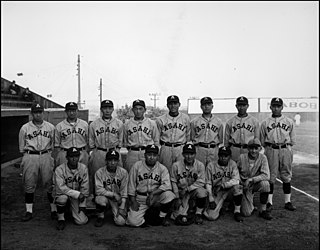
The Asahi was a Japanese-Canadian baseball team of amateur and semi-professional players that was based in Vancouver from 1914 to 1941. The team won many league championships, particularly in the 1930s.

The Julia Tuttle Causeway sex offender colony was an encampment of banished, registered sex offenders who were living beneath the Julia Tuttle Causeway—a highway connecting Miami, Florida to Miami Beach, Florida, United States—from 2006 to April 2010. The colony was created by a lobbyist named Ron Book, who wrote ordinances in several different Miami-Dade County cities to restrict convicted sex offenders from living within 2,500 feet (760 m) of schools, parks, bus stops, or homeless shelters. Since Book was also head of the Miami Homeless Trust, he was also in charge of finding housing for the released sexual offenders. Under these ordinances, the only areas where sex offenders could legally reside within Miami-Dade County were the Miami Airport and the Florida Everglades. Miami-Dade laws are significantly stricter than State of Florida laws on residency restrictions for sex offenders. Florida state law required that no sex offender could live within 1,000 feet (300 m) from "where children gather". Under that requirement, housing was possible; however, because of Book's lobbying, the Dade County Commission increased that number to 2,500 feet (760 m), thereby banishing hundreds of local citizens who then began gathering under the Julia Tuttle Causeway.
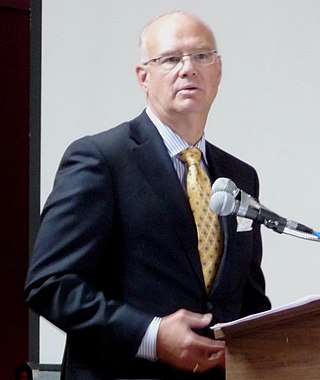
Dean Fortin served as mayor of Victoria, British Columbia, from 2008 to 2014.
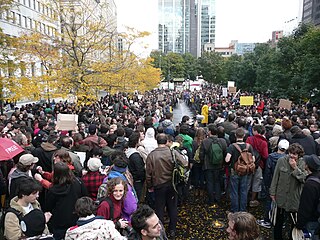
Occupy Canada was a collective of peaceful protests and demonstrations that were part of the larger Occupy Together movement which first manifested in the financial district of New York City with Occupy Wall Street, and subsequently spread to over 900 cities around the world.

Occupy London was a political movement in London, England, and part of the international Occupy movement. While some media described it as an "anti-capitalist" movement, in the statement written and endorsed by consensus by the Occupy assembly in the first two days of the occupation, occupiers defined themselves as a movement working to create alternatives to an "unjust and undemocratic" system. A second statement endorsed the following day called for "real global democracy". Due to a pre-emptive injunction, the protesters were prevented from their original aim to camp outside the London Stock Exchange. A camp was set up nearby next to St Paul's Cathedral. On 18 January 2012, Mr Justice Lindblom granted an injunction against continuation of the protest but the protesters remained in place pending an appeal. The appeal was refused on 22 February, and just past midnight on 28 February, bailiffs supported by City of London police began to remove the tents.

Occupy Toronto was a protest and demonstration that began on October 15, 2011, in Toronto, Ontario, near Bay Street in Downtown Toronto's Financial District and moved to St. James Park. It was a part of the Occupy movement, which protested against economic inequality, corporate greed, and the influence of corporations and lobbyists on government.

Occupy Eugene was a collaboration that occurred in Eugene, Oregon based on the Occupy Wall Street movement which began in New York City on September 17, 2011. Occupy Eugene included peaceful protests and demonstrations. Protesters were concerned about inequities in the distribution of wealth, banking regulation, housing issues and corporate greed. The first protest march was held on October 15, 2011. The march started at the Wayne Morse Free Speech Plaza and continued downtown before marching over Ferry Street Bridge. It was reported that close to 2000 people were in attendance from all over the state of Oregon. Occupy Eugene continued to hold regular protests and actions until it left the encampment in December 2011. Protesters have stated that they do not have a set group of leaders. Occupy Eugene General Assemblies have met from as frequently as twice a day at times during active occupations, and as infrequently as weekly. Many committees have met since at least the third General Assembly, typically weekly. Decisions are made through a process known as consensus. Occupy Eugene's consensus process operates in a similar fashion to how consensus is being handled in New York City by protesters involved in Occupy Wall Street. Although the exact method varies from Occupation to Occupation. As of October 18, 2011, The Eugene police department was allowing protesters to camp in downtown Eugene, although city law prohibits it. Eugene police also stated that downtown camping won't be permanently allowed.
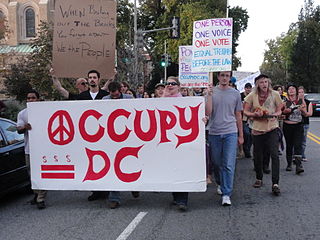
Occupy D.C. was an occupation of public space in Washington, D.C. based at McPherson Square and connected to the Occupy movements that sprung up across the United States in Fall 2011. The group had been demonstrating in McPherson Square since October 1, 2011, and in Freedom Plaza since October 6. Despite crackdowns on other Occupy projects across the country, federal authorities claimed on November 15 that they have no plans to clear McPherson Square Park. The National Park Service decided against eviction after meeting with activists and discussing health and safety conditions.

Occupy Pittsburgh was a collaboration that has included peaceful protests and demonstrations, with an aim to overcome economic inequality, corporate greed and the influence of corporations and lobbyists on government. The protest has taken place at several locations in Pittsburgh, notably Market Square, Mellon Green and the city's Oakland neighborhood adjacent to the University of Pittsburgh and Carnegie Mellon University. and East Liberty neighborhood.

The Occupy movement began in the United States initially with the Occupy Wall Street protests in New York City, but spread to many other cities, both in the United States and worldwide. This list article is an alphabetical, non-chronological summary of Occupy events that have occurred in cities in the United States.

Occupy St. Louis (OccupySTL) was a postpartisan people's movement that began on October 1, 2011 as a peaceful protest against corporate greed, its influence over the economy, its corruption of government, and ensuing inequality. Although people possess differing viewpoints and diversity of views is a central tenet, commonly held themes seek an equal playing field in the economy with more equal opportunities for all people as well as accountability for corporate and financial malfeasance. Many of those in the movement argue that structural, systemic change is necessary and that incremental reform is insufficient and in any case not possible without popular countervailing power to the power of moneyed interests. Occupy St. Louis is in solidarity with the Occupy Wall Street movement. It is located at Kiener Plaza in downtown St. Louis near an area which includes many financial institutions such as commercial banks and the Federal Reserve Bank of St. Louis.
Occupy Windsor was an Occupy movement encampment in David Croll Park, Windsor, Ontario, Canada. The protest ended and all protesters evacuated the area on December 12, 2011 with promises to return to the park to reseed areas damaged by the camp.
Occupy Central was an occupation protest that took place in Central, Hong Kong from 15 October 2011 to 11 September 2012. The camp was set up at a plaza beneath the HSBC headquarters. On 13 August 2012, the High Court granted an injunction against the continuation of the protest, and ordered the occupants to leave by 9pm on 27 August. But protesters defied the order and remained in place until 15 days after the deadline, when court bailiffs were sent to evict the occupants. Ending on 11 September, the movement remains one of the lengthiest Occupy movements in the world.
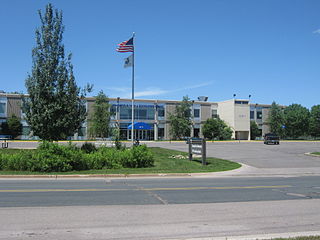
The Minneapolis Park and Recreation Board (MPRB) is an independent park district that owns, maintains, and programs activities in public parks in Minneapolis, Minnesota, United States. It has 500 full-time and 1,300 part-time employees and an $111 million operating and capital budget.

The U.S. city of Minneapolis featured officially and unofficially designated camp sites in city parks for people experiencing homelessness that operated from June 10, 2020, to January 7, 2021. The emergence of encampments on public property in Minneapolis was the result of pervasive homelessness, mitigations measures related to the COVID-19 pandemic in Minnesota, local unrest after the murder of George Floyd, and local policies that permitted encampments. At its peak in the summer of 2020, there were thousands of people camping at dozens of park sites across the city. Many of the encampment residents came from outside of Minneapolis to live in the parks. By the end of the permit experiment, four people had died in the city's park encampments, including the city's first homicide victim of 2021, who was stabbed to death inside a tent at Minnehaha Park on January 3, 2021.

















